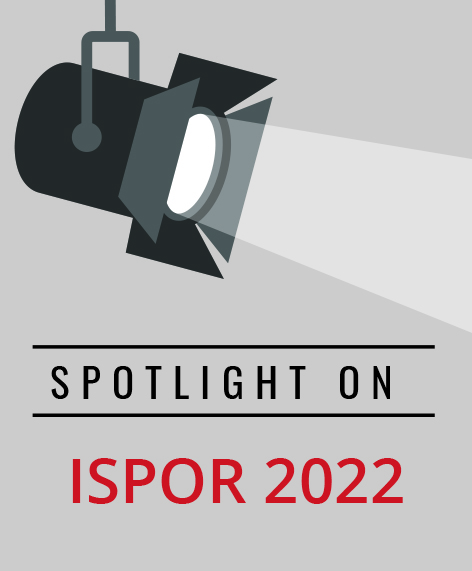Poster Session Recap: Infectious Disease (Non-Vaccine)
Jacinda Tran, PharmD, MBA, Comparative Health Outcomes, Policy, and Economics (CHOICE) Institute, University of Washington, Seattle, WA, USA
Predictors of Value-Based Outcomes in Sepsis: An Analysis Using Electronic Health Record and Administrative Claims Data
Presenter: Harrison Yoon, University of Health Sciences and Pharmacy in St. Louis, St. Louis, MO, USA
Summary: The cost of sepsis hospitalizations has been estimated to be $27 billion annually, accounting for 13% of total inpatient costs. In this study, the authors used electronic health records and claims data to identify variables predictive of high-cost and poor outcomes among patients with sepsis. They identified myocardial infarction, cardiovascular disease, peptic ulcer disease, cirrhosis, chronic kidney disease, malignancies, and antibiotic-resistant pathogens. The authors plan to identify the hospital resources utilized by patients with the highest costs as potential targets for cost reduction and outcomes optimization.
Cost of Long COVID Following Severe Disease: A US Healthcare Database Analysis
Presenter: Jill Ruppenkamp, Johnson & Johnson, New Brunswick, NJ, USA
Summary: The study utilized IBM MarketScan Commercial and Medicare Supplemental databases to analyze the healthcare costs associated with long COVID of ongoing COVID-19 symptoms and post-COVID-19 syndrome, which are defined as COVID-19 symptoms persisting longer than 4 and 12 weeks, respectively (Figure 1). Machine learning models predicted patients who would have the highest healthcare costs. The authors found that post-COVID-19 syndrome was associated with almost 3 times the cost among patients with severe disease. Sepsis, pneumonia, shock, and thrombosis at time of diagnosis were key predictors of high cost, and these prediction models may help with resource allocation and cost containment.
Figure 1. Top 12 feature impact on generalized linear model blender model.
-figure-1.png?sfvrsn=406e87bd_0&MaxWidth=600&MaxHeight=600&ScaleUp=false&Quality=High&Method=ResizeFitToAreaArguments&Signature=09ABBA60B5C951DDF075B07526EC8788C507273B)
Early Albumin Infusion May Reduce Intensive Care Unit Cost in Cirrhotic Patients With Spontaneous Bacterial Peritonitis: A Cross-Sectional Study
Presenter: Chris Runken, Grifols SSNA, Research Triangle Park, NC, USA
Summary: Because spontaneous bacterial peritonitis is a cirrhosis complication associated with high costs, the authors examined the relationship between albumin infusion timing and total intensive care unit (ICU) cost among cirrhotic inpatients who developed spontaneous bacterial peritonitis during hospitalization. Based on analyses using generalized linear models, the authors concluded that co-administration of albumin with antibiotics may reduce ICU costs associated with spontaneous bacterial peritonitis .
Comparing the Effectiveness and Cost-Effectiveness of SARS-COV-2 Screening Strategies Using Rapid Antigen Tests in a Residential College Campus
Presenter: Harry Smolen, Medical Decision Modeling Inc, Indianapolis, IN, USA
Summary: The study compared the effectiveness and cost-effectiveness of rapid SARS-CoV2 antigen tests, which have lower test sensitivity. The authors used a compartmental model to evaluate strategies that screened based on symptoms or every 1 to 7 days and test sensitivities varying between 40 to 60% (Figure 2). ICERs were found to have increased with increasing testing frequency and increasing sensitivities, more frequent testing resulted in more infections averted, and screening every 3 days was cost-effective using tests with lower test sensitivities.
Figure 2. Cost-effectiveness planes for 40%, 50%, and 60% sensitive tests.
-figure-2.png?sfvrsn=3fda2ae7_0&MaxWidth=360&MaxHeight=975&ScaleUp=false&Quality=High&Method=ResizeFitToAreaArguments&Signature=52DA2CAB94BFD29A154D3F7C71B33D142EC7A02D)
Healthcare Costs of COVID-19 Versus Flu and Pneumonia: A Payer Perspective
Presenter: Fayolah Richards, Janssen Global Services, Rahway, NJ, USA
Summary: In this study, the authors estimated healthcare all-cause and disease-specific costs of a cohort of COVID-19 patients in IBM MarketScan Commercial and Medicare Supplemental databases compared to a matched cohort of patients with influenza/ pneumonia. Although the authors found that the cost of influenza/pneumonia were higher than mild COVID-19, the costs of severe or critical COVID-19 exceeded those of influenza/ pneumonia patients.

